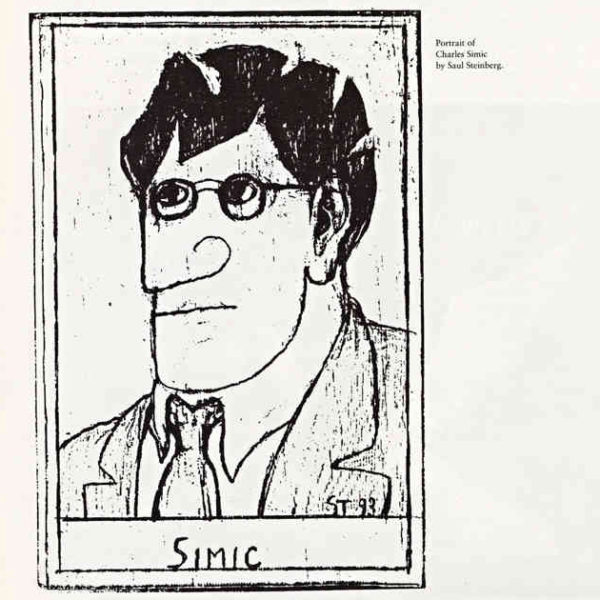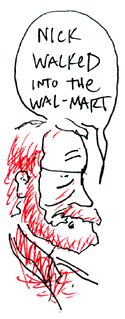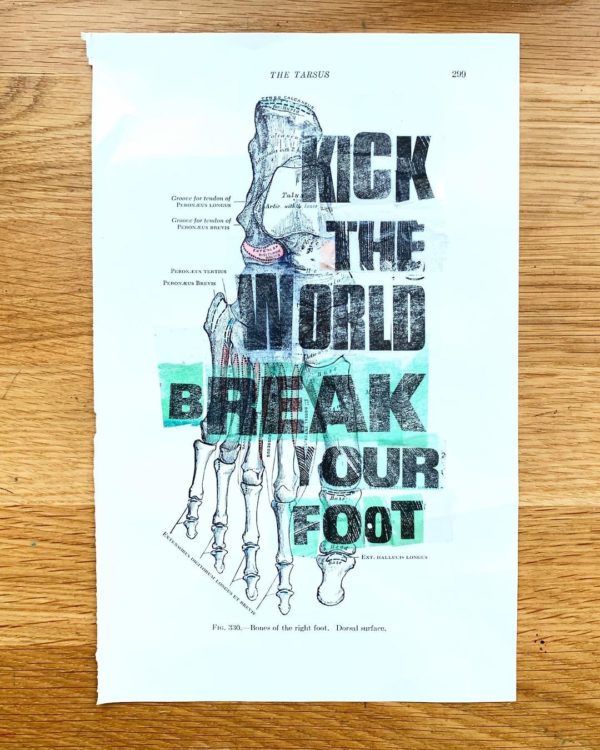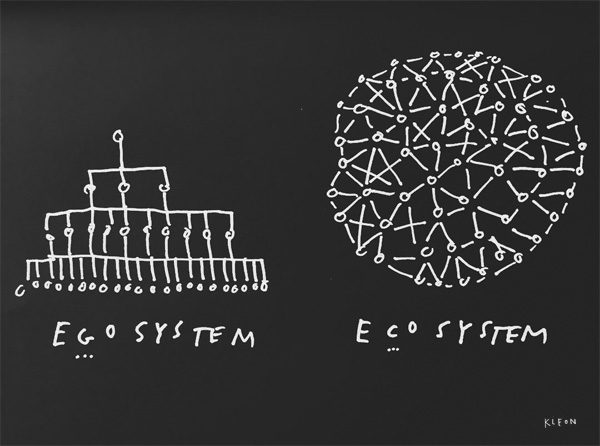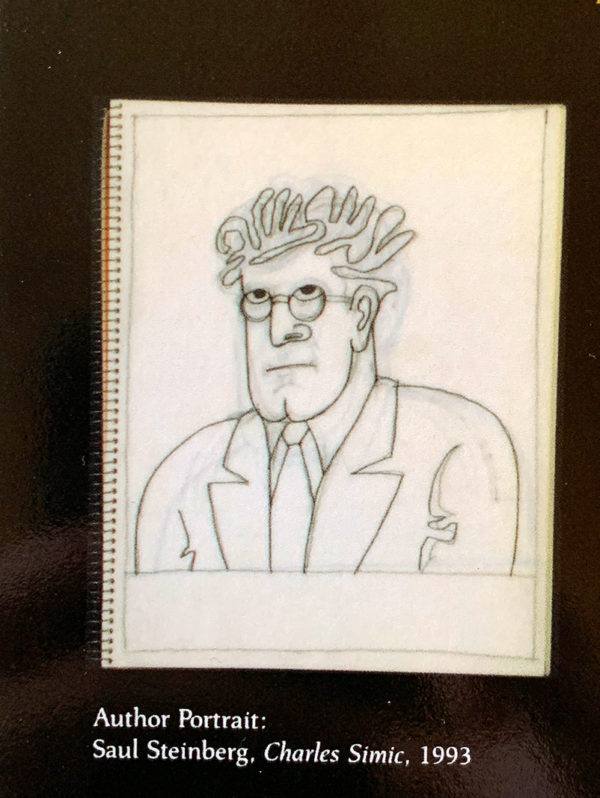
The poet Charles Simic died. Here is the author portrait on the back of his book, The Monster Loves His Labyrinth: Notebooks, drawn by Saul Steinberg in 1993.
Simic said walking around New York with Steinberg was as delightful as looking at one of his drawings. They became friends towards the end of Steinberg’s life. (Steinberg died in 1999.)
Simic wrote at least 3 pieces about his friend, all of which shed good light on both the subject and the author: in 2005, a brief review of Steinberg at The New Yorker; in 2006, his introduction for Saul Steinberg: Illuminations, the catalog for a wonderful show I saw on my honeymoon; and in 2012, a long review of Deidre Bair’s biography, “The Loves of Saul Steinberg.”
I get the sense that when Simic wrote about Steinberg he was also writing about himself. (I mean, when isn’t this true? But still.) Simic and Steinberg were both post-war immigrants — from Belgrade and Bucharest, respectively — who came from cultures where west and east collided and the old world clashed with the new.
“Saul said that the reason we understood each other perfectly was that we were both reared in what he called ‘the Turkish delight manner.’” Simic writes about his home in Belgrade, where “in every room, the Ottoman and Austro-Hungarian Empires still fought their battles,” and how his native city was surrounded by countryside in which “one could literally take a pick in what century one wanted to spend one’s holidays.”
So they were both artists unstuck in time and place. In Simic’s obituary, Dwight Garner writes that his “work combined a melancholy old-world sensibility with a sensual and witty sense of modern life,” and Simic basically said the same of Steinberg:
He was between worlds, in more ways than one, which is not a bad place to be for someone who wants to elude being classified as this or that. With a lightness of touch that concealed his keen intellect, the depth and complexity of his ideas, he reminds us that the fantastic and the natural, the comic and the serious all belong together. Since most immigrants’ lives, as a matter of course, resemble the Theater of the Absurd, taking such contradictions in stride was perfectly understandable on his part. For many of us, the story of exile ended up being a philosophy of laughter.
Simic said “America appealed to Steinberg as a collage of styles,” which suited him because he already came from a place “so rich in contradictions.” Simic thought of Steinberg as a “comic philosopher,” whose work showed us that “only a comic sensibility can grasp the character of our country and our national myths.”
Simic also said if you couldn’t place Steinberg as an artist, “a look at the writings of Rabelais, Cervantes, Gogol, and Mark Twain may provide a better answer than a visit to an art museum.” (Steinberg himself called himself a “writer who draws,” and even made a piece called Library, which includes a wooden copy of Gogol’s Nose.)

Simic highlighted another thing that about Steinberg the Immigrant: how his displacement made him see the world with fresh eyes.
“He walked out of his front door with eyes wide open as if he had just arrived from a foreign country, rediscovering the street and the city where he lived for many years.”
Being an immigrant made one into a child again, Steinberg said. A child who talked funny and noticed things natives never did. Beauty in America came as a surprise; it seemed to be an accident, and was unlike any experience of beauty he’d had before.
Steinberg did what all great artists do: he made the familiar strange, gave you a new way to look at the everyday.
In his essay, “How To Write a Charles Simic Poem,” in Equipment for Living, the poet Michael Robbins says Simic did the same, “taking Viktor Shklovsky’s concept of defamiliarization (ostranenie) literally.”
Robbins then quotes the first lines of “Fork,” a poem he teaches his students “as an example of the work poetry must do”:
This strange thing must have crept
Right out of hell.
It resembles a bird’s foot
Worn around the cannibal’s neck.
“Forget about self-expression, kid,” Robbins writes. “Learn to see the monster on the dinner table.”
I need to stop at some point, so I’ll end with a quote from the end of Simic’s Paris Review interview when he was asked about how his poetry reminds the reader of the pleasure of the ordinary:
Sausages sautéed with potatoes and onions! It’s also highly advisable to have a philosopher or two on hand. A few pages of Plato while working on a baked ham. Wittgenstein’s Tractatus over a bowl of spaghetti with littleneck clams. We think best when we bring opposites together, when we realize that all these realities, one inside the other, are somehow connected. That’s how the wonder and amazement that are so necessary to both poetry and philosophy come about. A “truth” detached and purified of pleasures of ordinary life is not worth a damn in my view. Every grand theory and noble sentiment ought to be first tested in the kitchen—and then in bed, of course.
Emphasis mine. RIP.
